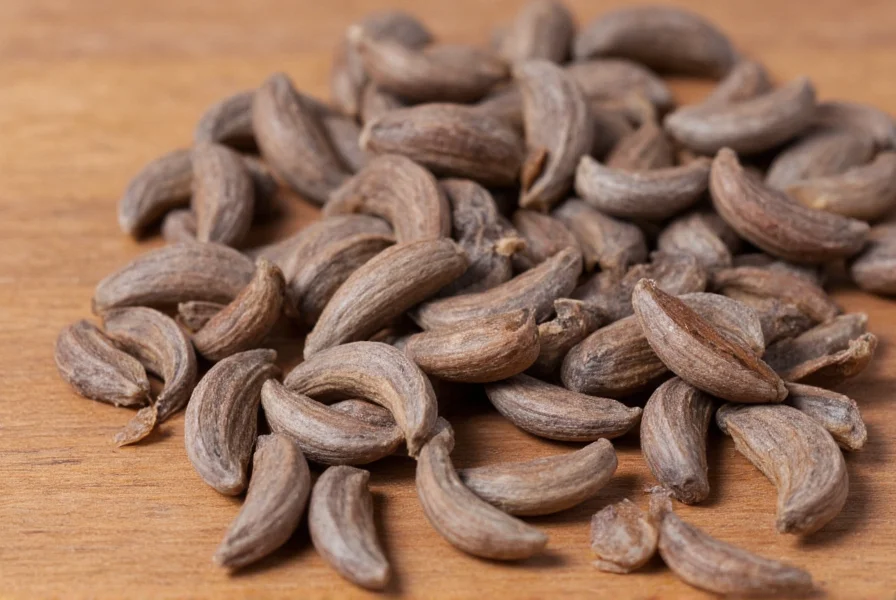
Understanding Aniseed: More Than Just a Licorice Flavor
Aniseed (Pimpinella anisum) represents one of the world's oldest cultivated spices, with archaeological evidence of its use dating back to ancient Egyptian and Roman civilizations. This annual plant typically grows 1-2 feet tall and produces伞-shaped clusters of white flowers that develop into the familiar crescent-shaped seeds we know as aniseed.
The characteristic flavor comes from anethole, the same compound found in fennel and star anise, though aniseed contains the highest concentration (80-90% of its essential oil). This potent compound gives aniseed its powerful sweet-licorice profile that remains stable through cooking processes, making it valuable in both raw and cooked applications.
Aniseed vs. Commonly Confused Spices
Many people mistakenly use "anise" and "aniseed" interchangeably, but understanding the differences between these similar-flavored spices prevents culinary mistakes. True aniseed comes exclusively from Pimpinella anisum, while other licorice-flavored spices have different botanical origins and flavor profiles.
| Spice | Botanical Source | Flavor Profile | Primary Growing Regions |
|---|---|---|---|
| Aniseed | Pimpinella anisum (Apiaceae family) | Strong sweet licorice, warm, slightly peppery | Mediterranean, Egypt, Spain, Mexico |
| Star Anise | Illicium verum (Schisandraceae family) | Sharper licorice, more intense, slightly bitter | China, Vietnam |
| Fennel Seed | Foeniculum vulgare (Apiaceae family) | Milder licorice, fresher, more herbal | Mediterranean, India |
Historical Journey of Aniseed Through Civilizations
Ancient Egyptians included aniseed in bread recipes found in tombs dating to 1500 BCE, while Roman naturalist Pliny the Elder documented its use as a digestive aid. During the Middle Ages, European apothecaries prescribed aniseed for everything from hiccups to snake bites. The spice traveled along ancient trade routes, becoming integral to both Eastern and Western culinary traditions.
One fascinating historical application involved Roman soldiers who consumed aniseed before battle to boost courage—a practice that gave rise to the expression "aniseed courage." In traditional European folk medicine, aniseed water served as a common remedy for infant colic, a practice that continues in some cultures today.
Culinary Applications of Aniseed Around the World
Chefs worldwide value aniseed for its ability to enhance both sweet and savory dishes. In Mediterranean cuisine, bakers incorporate ground aniseed into biscotti, pizzelle, and Greek breads. German bakers use it in traditional springerle cookies, while Middle Eastern chefs flavor lamb dishes with whole seeds.
For optimal flavor extraction, toast whole aniseed in a dry pan for 1-2 minutes before use. This simple technique releases volatile oils, intensifying the spice's natural sweetness. When substituting in recipes, remember that aniseed's flavor remains stable through cooking, unlike star anise which can become bitter with prolonged heat.
Scientifically Supported Health Properties
Modern research validates many traditional uses of aniseed. Studies published in the Journal of Ethnopharmacology confirm its carminative properties, explaining why cultures worldwide have used it for digestive issues. The European Medicines Agency recognizes aniseed as a traditional herbal remedy for mild digestive complaints and coughs.
Anethole, aniseed's primary compound, demonstrates potential anti-inflammatory and antimicrobial effects according to research in the Journal of Agricultural and Food Chemistry. However, pregnant women should consume aniseed in culinary amounts only, as medicinal doses may stimulate uterine contractions.
Proper Storage Techniques for Maximum Freshness
To preserve aniseed's volatile oils and flavor, store whole seeds in an airtight container away from light and heat. Properly stored, whole aniseed maintains peak quality for 2-3 years, while ground aniseed loses potency within 6 months. For extended storage, keep containers in the refrigerator or freezer—this slows oxidation and preserves the essential oils that give aniseed its distinctive flavor.
Frequently Asked Questions About Aniseed
What's the difference between aniseed and star anise?
Aniseed comes from the Pimpinella anisum plant (Apiaceae family) and has small, grayish-brown crescent-shaped seeds with a sweet licorice flavor. Star anise comes from the Illicium verum tree (completely different family) and features star-shaped pods with a sharper, more intense licorice taste. While both contain anethole, they're botanically unrelated and shouldn't be used interchangeably in precise recipes.
Can I substitute aniseed for star anise in recipes?
You can substitute aniseed for star anise at a 1:1 ratio by volume for most savory dishes, but expect flavor differences. Aniseed provides a sweeter, warmer licorice note, while star anise offers a sharper, more intense flavor. For baking, use 3/4 teaspoon ground aniseed for every whole star anise called for in the recipe. Remember that star anise contains shikimic acid (used in Tamiflu production), which aniseed lacks.
Is aniseed safe for children and infants?
Aniseed water has traditionally treated infant colic, but medical professionals now advise against this practice. The American Academy of Pediatrics warns that herbal remedies like aniseed water may contain variable concentrations of compounds that could affect developing nervous systems. For digestive issues in children, consult a pediatrician rather than using home remedies containing aniseed.
How can I tell if my aniseed has gone bad?
Fresh aniseed should have a strong, sweet licorice aroma and grayish-brown color. If your aniseed has lost its fragrance, appears faded, or tastes flat, it's lost potency. Properly stored whole aniseed lasts 2-3 years, while ground aniseed remains potent for about 6 months. To test freshness, crush a seed between your fingers—if you don't detect a strong licorice scent immediately, it's time to replace your supply.











 浙公网安备
33010002000092号
浙公网安备
33010002000092号 浙B2-20120091-4
浙B2-20120091-4